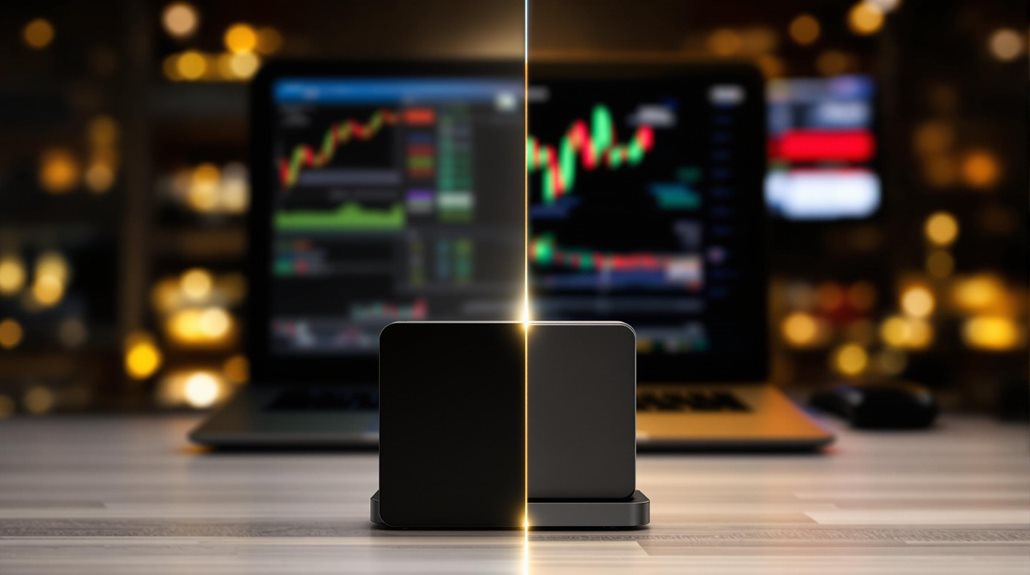Centralized exchanges (CEX) and decentralized exchanges (DEX) offer different ways to trade cryptocurrency. CEX platforms like Binance and Coinbase operate under central authority, requiring user verification and controlling users' assets. DEX platforms run on blockchain technology, allowing direct peer-to-peer trading without intermediaries while giving users full control of their funds. Each type has its trade-offs regarding speed, security, privacy, and fees. Understanding these differences helps traders make informed choices.

While cryptocurrency trading continues to evolve, two main types of exchanges have emerged: centralized exchanges (CEX) and decentralized exchanges (DEX). These platforms serve different needs and operate in fundamentally different ways. DEXs operate through permissionless smart contracts on the blockchain.
Centralized exchanges function like traditional banks, with a single authority managing all transactions. Popular exchanges like Binance and Coinbase dominate the CEX landscape with their extensive services. When users trade on a CEX, they don't actually hold their crypto – the exchange keeps control of the assets and private keys. This means the exchange can freeze or seize funds if needed. CEX platforms offer user-friendly interfaces that make it easy for beginners to buy and sell crypto. They also let users trade regular money (fiat) for cryptocurrencies and access advanced trading options like margin trading and futures. CEX platforms consolidate multiple services under one integrated system for a comprehensive trading experience. CEX platforms provide custodial services by maintaining control of users' digital assets in their own wallets.
On the flip side, decentralized exchanges operate without any central authority, allowing users to trade directly with each other. DEX users keep full control of their assets and private keys, which many consider a major advantage. However, DEX platforms tend to be more complex and usually require some technical knowledge to use effectively. They typically only support crypto-to-crypto trades, meaning users can't buy crypto with regular money directly on these platforms.
Security differs considerably between the two types. CEX platforms store large amounts of crypto in one place, making them attractive targets for hackers. Several major CEX hacks have occurred over the years, though some exchanges now offer insurance against theft. DEX platforms are generally more secure since they don't store user funds. However, they're not completely immune to security issues.
Privacy is another key difference. CEX platforms require users to verify their identity through KYC (Know Your Customer) and AML (Anti-Money Laundering) procedures. DEX platforms offer more privacy since they don't collect personal information from users.
When it comes to trading experience, CEX platforms typically offer better liquidity for major cryptocurrencies, meaning users can buy and sell large amounts without considerably affecting prices. They also process transactions faster and often charge lower trading fees, though withdrawal fees can be high.
DEX platforms generally have lower liquidity, which can lead to price slippage during trades. Their fees vary and include gas costs for processing transactions on the blockchain.
Frequently Asked Questions
How Long Does It Take to Complete a Transaction on DEX?
Transaction times on DEXs vary based on the blockchain they're built on.
Ethereum-based DEXs typically take around 15 seconds in good conditions, while Solana-based ones can complete transactions in under a second.
Bitcoin-based DEXs are slower, needing about 10 minutes.
Network congestion can slow things down considerably.
However, newer Layer 2 solutions have made transactions nearly instant on some DEX platforms.
Can I Trade Crypto Using Fiat Currency on a DEX?
Direct fiat currency trading isn't available on DEXs.
Users can't trade crypto using dollars, euros, or other traditional money on decentralized exchanges. Instead, they'll need to first convert their fiat to cryptocurrency using a centralized exchange, then transfer it to their wallet before trading on a DEX.
While some DEXs offer stablecoins as alternatives to fiat, the process still requires that initial fiat-to-crypto conversion step elsewhere.
What Happens if I Forget My Private Keys on a DEX?
If someone forgets their private keys on a DEX, they'll permanently lose access to all their crypto funds.
There's no way to reset or recover lost keys since DEXs don't store user information.
It's like losing the only key to a vault – once it's gone, it's gone for good.
The funds will remain forever locked in the blockchain, and there's no customer service or help desk that can restore access.
Are There Maximum Trading Limits on CEX Platforms?
Yes, CEX platforms have maximum trading limits that vary by exchange.
Binance allows up to 100 BTC daily withdrawals with KYC verification, while Crypto.com caps at CAD 60,000 based on collateral.
KuCoin sets a $50,000 daily limit for crypto-fiat trades.
These limits typically depend on factors like account verification level, trading history, and the user's location.
Exchanges adjust limits to maintain security and follow regulatory requirements.
Which Cryptocurrencies Have the Highest Trading Volume on DEX Platforms?
ETH trading pairs consistently dominate DEX trading volumes across platforms.
Stablecoins like USDT and USDC are also heavily traded, especially for swapping between different cryptocurrencies.
WBTC sees significant volume as it lets traders get Bitcoin exposure on Ethereum-based DEXs.
Platform-specific tokens like UNI (Uniswap) and CAKE (PancakeSwap) rank high in trading volume.
Meme coins occasionally spike in volume when they're trending, but their popularity tends to fluctuate.





